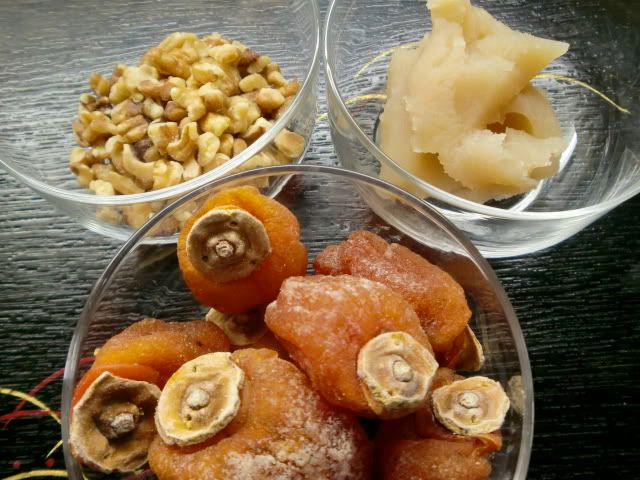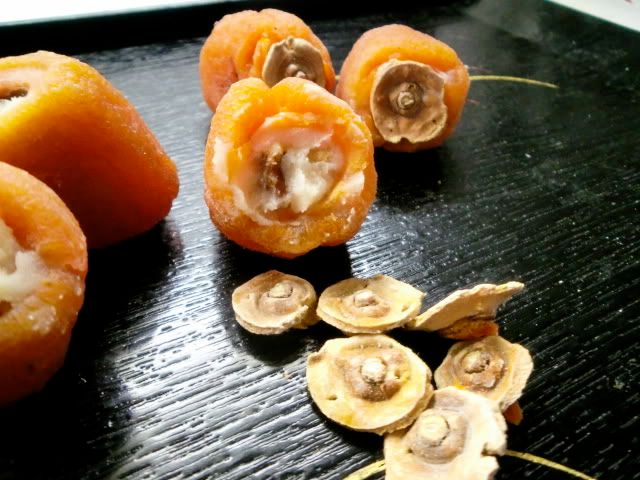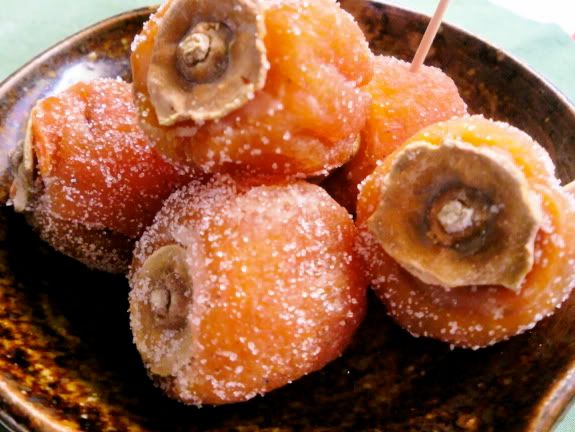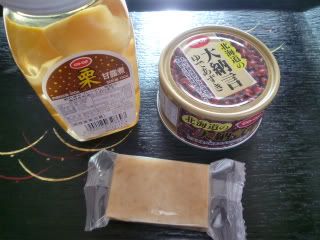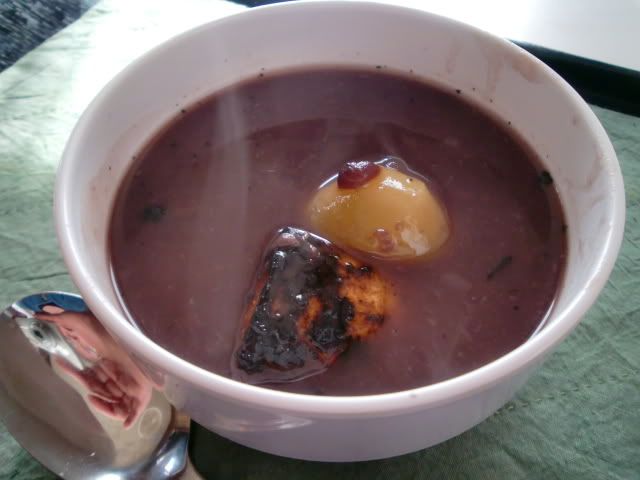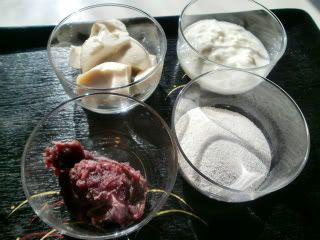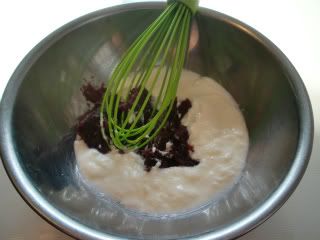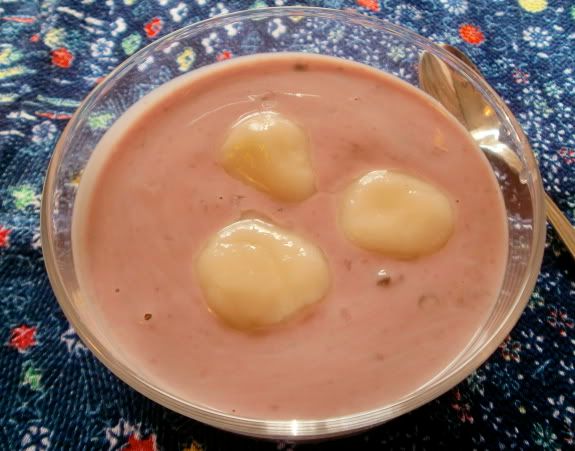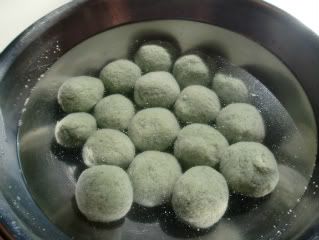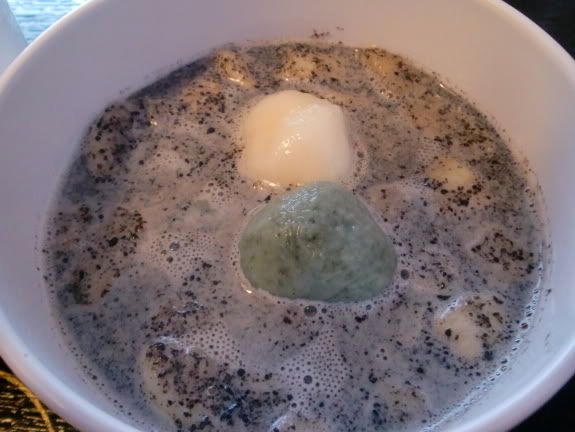
Ingredients:
lily root, sometimes called lily bulbs (yuri-ne)....2 heads
sugar.....1 Tablespoon or more to taste
salt....a pinch
food coloring, sesame seeds and sprinkles for decoration (optional)
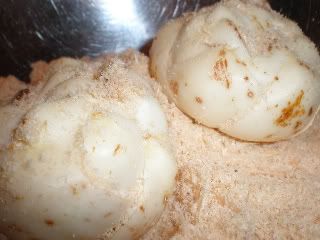
Lily root looks a bit like a head of garlic, but flatter. It should be available at an Asian food market. It usually comes to the consumer packed in sawdust. Kept this way, lily root can stay fresh for months in the refrigerator.
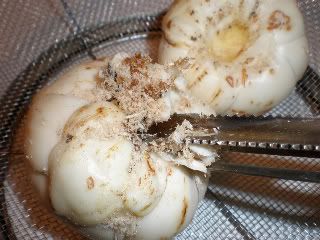
Turn the lily root over and you'll find a gnarly "belly button" that must be cut out before you can separate the "petals" of the root. This can be done easily with the pointy end of a potato peeler.
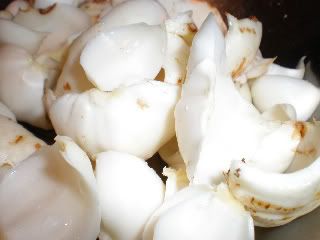
Carefully pry off the "petals" from the outer row of the root, working your way towards the center. When the "petals" have been separated, rinse them well in water to get all the dirt and sawdust out of the nooks and crannies. Cut away any brown edges or spots. Place the lily root segments in vigorously boiling salted water for about five minutes, or until the petals are soft enough to mash between your fingers.

Drain the lily root and mash finely while it is still hot. I do this by using a fine-meshed wire colander as a sieve, but a small-capacity food processor would probably work just as well. If the mashed lily root is too wet/soft to form into balls, put it back into the cooking pot and stir it with a wooden spoon over medium heat until enough liquid has evaporated to make it firmer. Add sugar to taste. After it's cooled to room temperature, mix in a pinch of salt.
The mashed lily root will be creamy white, but at this point you may add food coloring to all or part of the lily root. (With small children in mind, I decided to make colorful balls and dyed part of the mashed lily root yellow, and part of it orange.) Divide the mashed lily root into six equal segments and shape each segment into a ball.
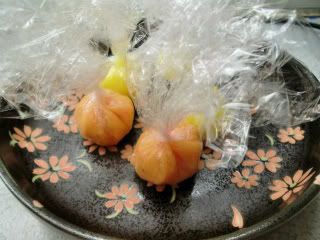
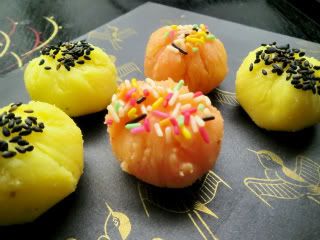
Twist each ball in a square of plastic wrap, and set aside for ten minutes or more. When the balls have settled, unwrap them carefully so as not to disturb the "wrinkles" that the plastic wrap made in the sides of each ball. To make the balls even more colorful, I sprinkled the yellow ones with black sesame seeds, and the orange ones with multi-colored chocolate sprinkles. For adults, I would probably have left the mashed lily root its natural color and topped each ball with grated citrus peel.
Lily root is very mild in flavor, but it has a fun crunchy texture when simply blanched, and a distinctive creamy texture when cooked through. To see how I use it in savory (non-dessert) dishes, go to Lily Root in Three Courses.

